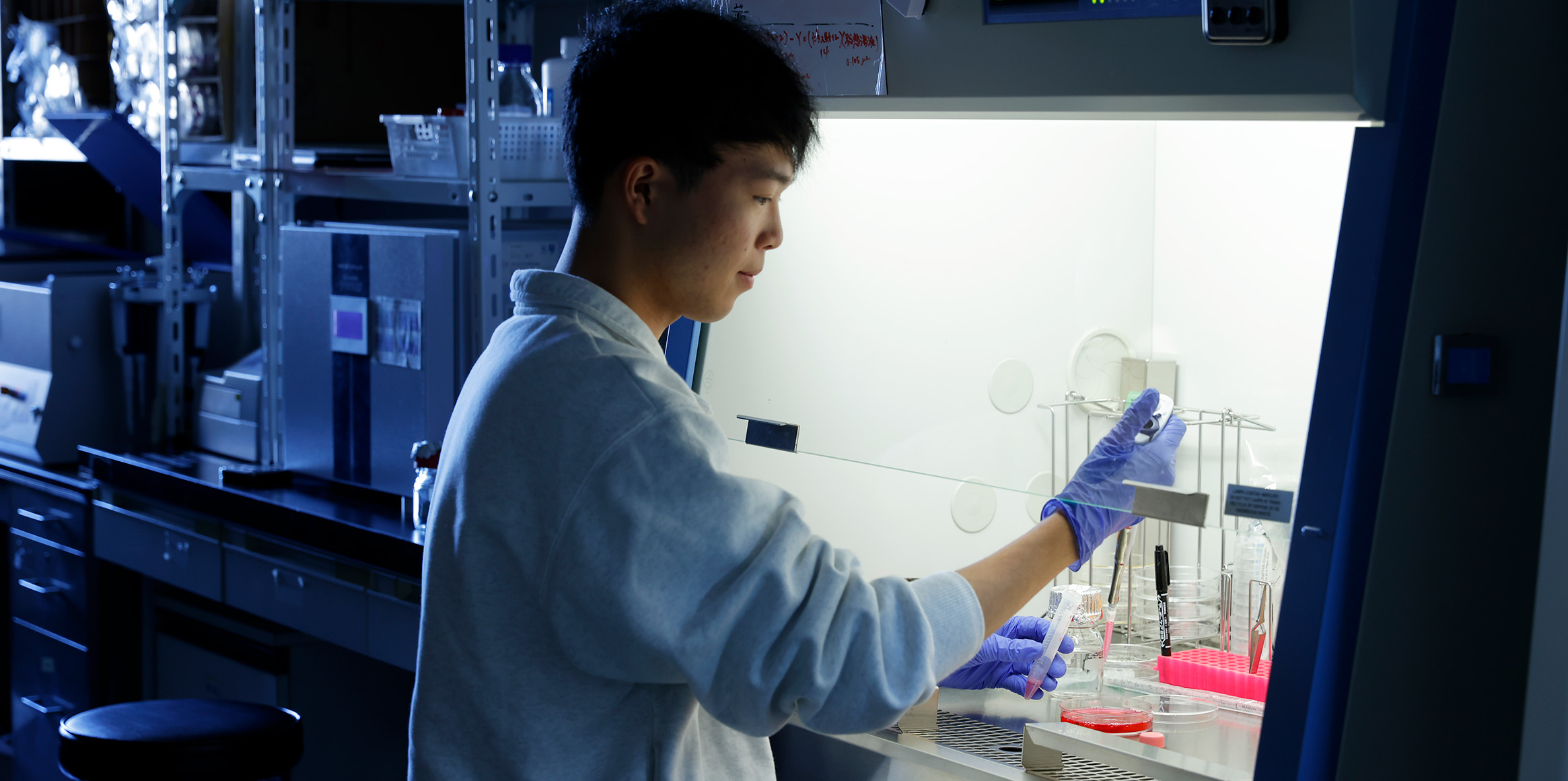“Engineering Design for Supporting Human Function” is a new engineering that combines the three research fields of “medical function + cognitive recognition + robotic function” with “design thinking” to implement these in society. Engineering Design for Supporting Human Function, this department will set up 12 laboratories categorized into these three research fields. In addition, the educational two courses, “Medical Function Engineering Course” and “Athletic Function Engineering Course”, are prepared for cultivating the academic ability necessary for the research works.
Research Groups & Research Areas
-
Medical Function Design
This engineering research field is concerned with finding ways to aid metabolism-related functions occurring in the human body. It is comprised of laboratories which focus on materials, mechanobiology, nanodevices and biologistics. The best of nanotechnology, biotechnology and pharmaceutical science are marshaled together to drive and develop research in this field.
Sera Research Group / Kamimura Research Group / Umezawa Research Group
-
Cognitive Function Design
This engineering research field is concerned with finding ways to aid the information processing-related functions occurring in the human brain. It is comprised of laboratories which focus on photonics, image processing, health cognition and designology. Light science, image processing, data science and media design are used to drive and develop research in this field.
Mori Research Group / Soga Research Group / Watanabe Research Group
-
Robotic Function Design
This research field is concerned with exploring engineering which aids human limb functioning. It is comprised of laboratories which focus on robotics, para-sports engineering, humanoid motor function and humanoid control. We tackle the development of novel robotic limb functions, as well as their control, through cutting-edge engineering and the power of mathematics.
Hobara Research Group / Kai Research Group / Matsumoto Research Group / Yoshida Research Group
List of Faculty Members
| Name | Title | Research Area | Keyword |
|---|---|---|---|
| KIKUCHI Akihiko | Professor | Biomedical engineering/Biomaterial science and engineering | Biomaterials, functional polymers, drug delivery systems, regenerative medicine |
| MATSUMOTO Yoshio | Professor | Intelligent robotics Rehabilitation science/Welfare engineering Hygiene and public health |
service robotics, assistive robotics, interaction, real-world assistive technology, welfare device, elderly care, communication nursing care/welfare, receipt analysis, big data |
| MORI Taketoshi | Professor | Perceptual information processing Human interface and interaction Intelligent informatics Intelligent robotics Life/Health/Medical informatics Biomedical engineering/Biomaterial science and engineering Medical systems Rehabilitation science/Welfare engineering Fundamental nursing |
Sensor data information processing, sensor networks Robotic interface, virtual reality, metaverse Machine learning, knowledge acquisition, natural language processing, data mining, ontolog Intelligent house, Intelligent environment, Robotic room, Sensing room, Sensor room Medical Information, Diagnostic Imaging, Remote Diagnosis Treatment, Health Information, H Imaging, biological modeling, biological simulation, biometric measurements Ultrasound systems, imaging systems, minimally invasive treatment systems Nursing Science and Engineering, Healthcare Engineering, AI Nursing Engineering, Elderly Care, Nursing Technology |
| SERA Toshihiro | Professor | Biomedical engineering/Biomaterial science and engineering Fluid engineering |
Biologistics, Imaging Biofluid |
| SOGA Kohei | Professor | Biomedical engineering/Biomaterial science and engineering Inorganic materials/Physical properties |
bio imaging, imuno assay Rare earth, Phoshpor |
| WATANABE Toshiyuki | Professor | Design science | Medical communication design, Dynamic visualization |
| YAMAUCHI Nodoka | Professor | ||
| YOSHIDA Eiichi | Professor | Intelligent robotics Intelligent mechanics/Mechanical systems |
Humanoid Robotics, Human Motion Analysis and Understanding Robot Motion Planning and Control |
| HOBARA Hiroaki | Associate Professor | Rehabilitation science/Welfare engineering | Biomechanics, Prosthesis |
| KAI Tatsuya | Associate Professor | Control engineering/System engineering | Nonlinear Systems, Nonlinear Control Theory, Robotics |
| KAMIMURA Masao | Associate Professor | Biomedical engineering/Biomaterial science and engineering Polymer chemistry Cell biology Medical pharmacy |
Biomaterials, Theranostics, Bioimaging Polymer biomaterials Mechanobiology Drug Delivery System, Nanomedicine |
| UMEZAWA Masakazu | Associate Professor | Nanomaterials chemistry Physical pharmacy Environmental and hygienic pharmacy Environmental physiology (including physical medicine and nutritional physiology) |
Secondary structure of proteins, Drug delivery Protein interaction, nanomaterial Nanoparticle, Exosome, Brain, Bioinformatics, Nutrition, Developmental toxicity Body temperature of deep tissues |
| KANG Sooin | Assistant Professor | Biomedical engineering/Biomaterial science and engineering | Medical informatics, Bioinstrumentation, Machine learning |
| MIYANO Takashi | Assistant Professor | Biomedical engineering/Biomaterial science and engineering Medical and hospital management |
biomedical engineering, cellular biomechanics, pharmacology medical data analysis |
| SASAKI Tomoya | Assistant Professor | Human interface and interaction Intelligent robotics |
Virtual Reality, Human Interface Human Robot Interaction |
| SHIOMOTO Shiyohei | Assistant Professor | Polymer/Textile materials | Biomaterials, Medical materials, Polymer brushes, Interface chemistry |
| TAKAHASHI Taiga | Assistant Professor | Brain biometrics Neurophysiology/General neuroscience |
Two-photon microscopy, Nanosheet, Cranial window, Large-scale imaging In vivo two-photon microscopy, Multiscale imaging of mouse brain, Ca2+ imaging |
| YUGUCHI Akishige | Assistant Professor | Intelligent robotics | Robotics, Human-Robot Interaction |
Information on Career Paths
Because this is a new department established in April 2023, no post-graduation employment figures are available; however, it is anticipated that graduates, armed with their engineering knowledge, user perspective-focus and creativity honed by design thinking, will be active in a wide range of fields centered on QOL-support industry companies and others.
Machinery- and equipment-related fields such as medical equipment, surgical assistance robots, disability support equipment, walking assistance robots, work assistance robots and industrial robots; chemical industry fields such as pharmaceuticals, biomaterials and biotechnology; information processing service and information provision service fields such as image processing, information processing and information communication; professional and technical service fields such as management consulting; graduate school; etc.

